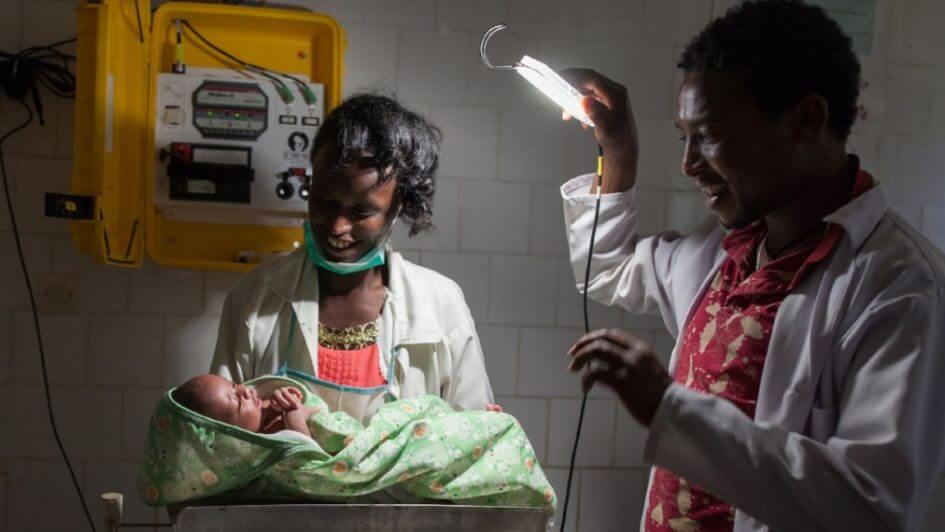The founder of Bloomberg New Energy Finance, Michael Liebreich, recently launched the Project Bo crowdsourcing campaign, triggered when he saw a tweet last year from Dr Niall Conroy of University College Dublin, who was working at a Sierra Leone hospital. “Three of our oxygen-dependent babies died last night when the power went off,” wrote Dr Conroy. “Not good enough in 2017. Low-cost tech, eg affordable solar power, must be a priority for saving newborn lives.”
Newborn deaths still account for 46 percent of under-five deaths globally, making the issue a key part of improving global healthcare. Women in developing countries are 300 times more likely to die from childbirth than women in developed countries. According to estimates by the World Health Organization (WHO) in 2015, approximately 830 women die every day due to complications during pregnancy or childbirth, and 99 percent of these deaths occur in developing countries. Adding to the tragedy, most of these maternal deaths occurred in low-resource communities, and could have been prevented. Power for All’s new Fact Sheet provides further key facts and figures on the state of energy in primary healthcare, most notably in India.
Part of achieving universal health coverage, a key element of the Sustainable Development Goals (SDGs), means ensuring that everyone has access to quality healthcare, including maternal and child health services, yet not enough attention is being given to healthcare’s reliance on energy. Energy is a vital enabler of healthcare delivery, and clean, distributed energy solutions are particularly well-suited to address the needs of health facilities in rural and off-grid areas. While the focus internationally is on strengthening health systems, the health community seldom links the ability to deliver quality health services with the availability of energy.
Energy is critical for the delivery of health services in several ways: When health facilities have sufficient and reliable power, women can more safely give birth at night in well-lit delivery rooms, oxygen can be provided to small and premature newborns, medical equipment can be powered and better sterilized, and clinics can preserve lifesaving vaccines for newborns, children, and adults. However, in many parts of sub-Saharan Africa, fewer than a third of all health facilities have reliable access to electricity.
Solar energy in particular holds great promise for powering healthcare facilities, as seen in a groundbreaking study in India in 2017. Over the past several years, with the support of the UK’s Department for International Development and other partners, the UN Foundation has been demonstrating new and innovative ways of solarizing health facilities in resource-constrained environments. Progress is tangible. Just this week, Surat in Gujurat, India, became the first district in the country to have100% solar-powered health centers.
In parallel, the UN Foundation has partnered with WHO to build a much-needed evidence base for further investment in this space, and is raising awareness about the linkages between energy and healthcare. Efforts are also underway to develop a quality assurance framework for solar energy solutions in social institutions, such as clinics and hospitals. All of these efforts aim to help pave the way for the United Nations and its partners to achieve the SDGs.
These and many other interventions demonstrate how, together, we can establish the important and inextricable linkages between sustainable energy access (SDG 7) and progress on health (SDG 3), and promote other efforts to improve the lives of the most vulnerable, especially women and children. When we power healthcare, we can empower brighter, healthier and more sustainable communities.
